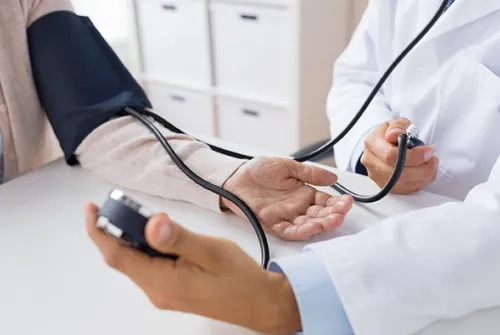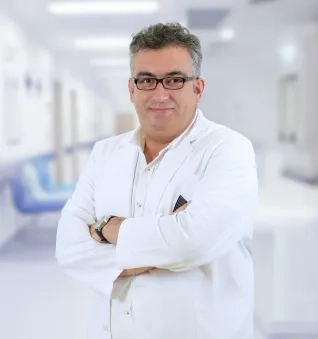Alo Yeditepe
Alo Yeditepe
By 2025, Hypertension Patients Are Expected to Reach 1.5 Billion
Hypertension, which affects 30-45 percent of the entire adult age group, is a serious problem that affects all vital organs rather than a single disease. Cardiology Specialist Assoc. Prof. Dr. Olcay Özveren pointed out that hypertension is seen in 1.15 billion people worldwide according to 2015 data. It is estimated that this number will reach 1.5 billion by 2025.
Hypertension, also known as the “silent killer”, is an important health problem for the world's population, as it is often viewed as insidious. Since it can usually be noticed during routine blood pressure measurements, the reasons for the patient's application to the physician can be different, from headache to ringing in the ears, from frequent urination to blurred vision. Stating that cardiovascular diseases and kidney failure have an important place among the causes of hypertension, Yeditepe University Hospitals Cardiology Specialist Assoc. Prof. Dr. Olcay Özveren: “Hypertension is diagnosed by measuring systolic (large) blood pressure >140 mmHg and diastolic (small) blood pressure >90 mmHg.”
1 in 3 People Over the Age of 60 Have Hypertension
Stating that hypertension should not be seen as a single disease, but as the part of the iceberg above the water, in the group of diseases that concern all vital organs, Yeditepe University Kozyatağı Hospital Cardiology Specialist Assoc. Prof. Dr. Olcay Özveren gave important statistics about the prevalence of the disease: ''While the prevalence of hypertension in the world is 1.15 billion people according to 2015 data, it is estimated that this number will reach 1.5 billion by 2025. Although the prevalence is 30-45 percent in the entire adult age group (18-75 years), this rate increases to 60 percent and above after the age of 60. In our country, it is estimated that there are five million men and six million women hypertensive patients in the population of 34 million people aged 20 and over. According to this estimate, 30 percent of all adult men and 35 percent of women have high blood pressure. While the frequency is around 19 percent in the 30-39 age group, less than half of men and more than half of women in the 50-59 age group are hypertensive. In individuals over the age of sixty, hypertension is found in two out of every three people.''
There is Risk At Every Age
Underlining that people in all age groups are at risk in terms of hypertension, Assoc. Prof. Dr. Olcay Özveren: “Especially age increases the risk of hypertension significantly. Being a man, smoking the past few days, or still smoking are among the important risk factors. However, being diagnosed with diabetes, high cholesterol, being overweight and obese, having a family history of early-onset hypertension, early menopause, and a sedentary lifestyle are also known risk factors for hypertension.''
Reasons That Lead the Patient to the Physician
Referring to the fact that hypertension is mostly noticed by chance, Assoc. Prof. Dr. Olcay Özveren: “Complaints such as headache, shortness of breath with effort, the feeling of obstruction, chest pain, fatigue, weakness, blurred vision, dizziness, tinnitus or buzzing, frequent urination, swelling in the legs, irregular heartbeat and nosebleeds cause the patient to consult a physician. Therefore, searching for the presence of hypertension in patients presenting with these complaints also carries a prefix for timely diagnosis and treatment.”
5 MmHg Drop in Blood Pressure Reduces Cardiovascular System-Related Loss of Life by 20 Percent
Drawing attention to the fact that controlling hypertension may prevent the development of vital organ damage such as cardiovascular diseases, stroke, and kidney failure in the long term, Yeditepe University Hospital Cardiology Specialist Assoc. Prof. Dr. Olcay Özveren continued his words as follows:
“According to the information obtained from meta-analyses, when systolic (large) blood pressure decreases by 10 mmHg, diastolic (small ) blood pressure decreases by 5 mmHg, cardiovascular-related life losses decrease by 20 percent, all-cause life losses decrease by 10-15 percent, stroke by 35 percent, coronary heart disease by 20 percent, and heart failure by 40 percent.”
Gold Standards of Treatment
Cardiologist Assoc. Prof. Dr. Olcay Özveren stated that drug therapy and lifestyle changes are the basic building blocks of hypertension treatment and added: “While drug therapy is completely regulated by the physician, lifestyle changes are the treatment method in which the patient plays an active role. Lifestyle changes can be listed as follows:
Salt is restricted (daily intake of <2 g sodium= 5 g salt) and potassium intake should be increased. The BP-lowering effect of increased potassium intake is directly proportional to increased sodium intake. The DASH diet recommends 4.7 g/day of potassium. Patients with renal dysfunction and patients using drugs that disrupt potassium excretion should be careful in this regard. Alcohol consumption should be reduced, smoking should definitely be stopped, and a Mediterranean-style diet should be preferred. In other words, it should be paid attention to consuming vegetables, fruits, low-fat products, fish, and fats rich in unsaturated fatty acids. Those who are overweight should definitely lose weight. Waist circumference should be below 94 cm for men and below 80 cm for women. Weight should be lost to ensure this. Regular physical activity is recommended to do 30 minutes of moderate-intensity dynamic aerobic exercise (walking, cycling, swimming, etc.) 5 to 7 days a week. ”
Press Coverage: sabah.com | posta.com | haberturk.com | gazetevatan.com | cumhuriyet.com | yeniakit.com
About
Faculty and Year of Graduation:
İ.U. Cerrahpaşa Faculty of Medicine, 2000
”
See Also
- What is Heart Rhythm Disorder (Arrhythmia)? Symptoms and Causes
- What is Sudden Cardiac Death? What are the Symptoms?
- What is a Heart Attack? What are the Symptoms of a Heart Attack?
- Carotid Artery Disease
- What is Intravenous Ultrasound (IVUS)?
- The Risk of High Blood Pressure Increases as You Go to High Altitudes
- Misconceptions about the Female Heart
- Coronary CT Angiography (Virtual Angiography)
- Effort Test
- Heart Attack Causes and Symptoms
Alo Yeditepe




